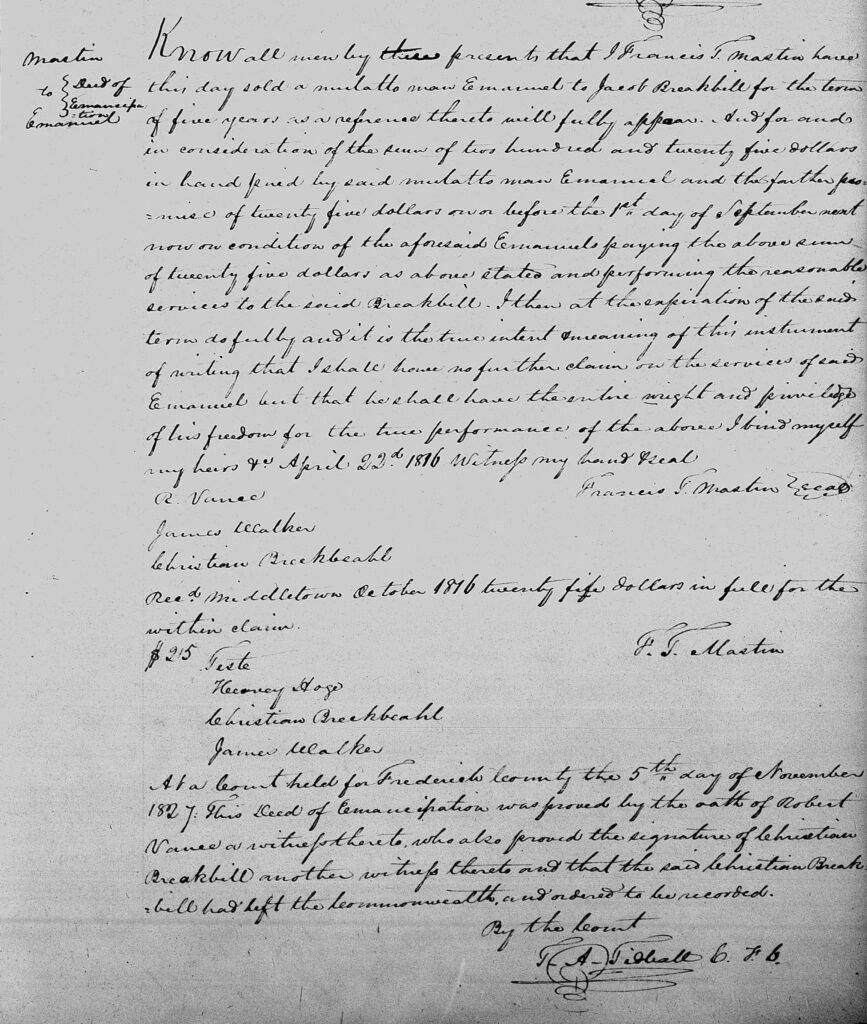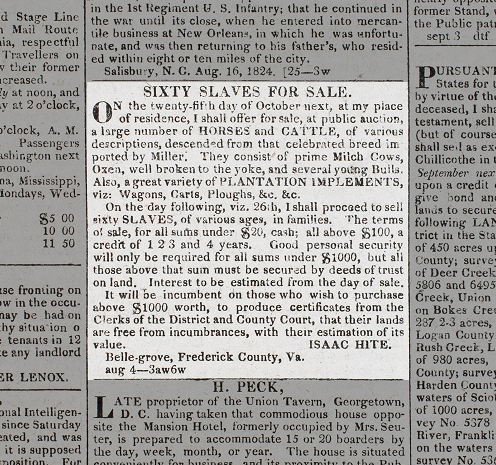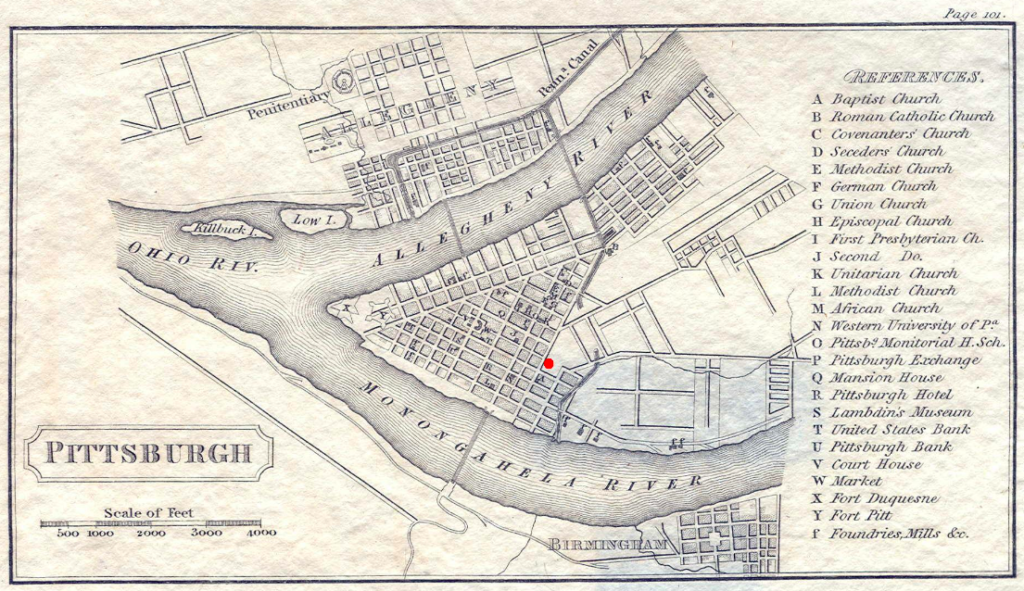The road to freedom for the Jackson family starts with Emanuel (who also went by Manuel) Jackson (1786). He was born into enslavement around 1786, likely in Virginia. Francis T. Mastin enslaved Emanuel in Middletown, Virginia until April 22, 1816, at which point Francis sold him to Jacob Breakbill of Columbia Furnace in Shenandoah County, Virginia. Jacob enslaved Emanuel for 5 more years, but they had an agreement in which Emanuel would be freed if he paid an additional $25 (about $530 in today’s currency) in addition to what he had already paid to Jacob.
On November 5, 1821, Emanuel was a free man. The image to the right is the original Deed of Emancipation between Emanuel and Francis outlining the conditions of his freedom. To read the full transcript of the document, click here.
Think like a historian!
How did historians link Emanuel Jackson (1786) to Hannah Thorton at Belle Grove?
Frederick County (Virginia) tax rolls show numerous Jackson listings that span four decades, including a Manuel and an Emanuel. Enslaved persons names were often casually documented, so at first glance, these two entries seem to be the same person, but to be certain, historians kept researching. Emanuel is taxed for multiple horses, indicating he earned his living as a teamster, which makes sense given that most of the Jackson men in Pittsburgh, just a few decades later, are all teamsters, too.
But again, how does being a teamster link Emanuel (1786) to Hannah, the daughter of Frank Thornton and Abba, a couple whose 12 children, 22 grandchildren, and a great grandchild were enslaved at Belle Grove? In the Shenandoah Valley, which was considered the frontier, the wealthy purchased their household goods, tools, and clothing from businesses in Alexandria, Virginia and Baltimore, Maryland, which were shipped by wagon. Such a long journey required trusted and road savvy teamsters, normally Black men, enslaved or free. Emanuel may have worked this long-haul route, as both an enslaved man as well as a free man, perhaps even transporting goods to and from the Hite family at Belle Grove. He may have stayed overnight at Belle Grove during one or more of his travels, and given that the only place he would’ve been allowed to stay was in the enslaved housing, perhaps this is where he crossed paths with Hannah.
What happened to Hannah?
What happened to Hannah is a mystery. When Major Hite’s Commonplace Book was digitized, historians noticed four faint letters next to Hannah’s name: SOLD. She, too, was likely sold during the sale of 1824.


Emanuel’s Children
In January 1810, Emanuel and Hannah had their first son, Daniel Jackson. Over the next decade, they had five more children, all of whom were enslaved at Belle Grove:
- Adams, born in 1811
- Nace, born in 1814
- Emanuel, born in 1815
- Frank, born in 1818
- Betsy Ann, born in 1820
Once Emanuel (1786) bought his freedom in 1821, he moved to Charlestown, Virginia (West Virginia today) where he likely met and ultimately married another woman named Nancy. Together they had three children: two sons, Isaac and Henry, as well as a daughter, Louisa.
Although Emanuel remarried, started another family, and at some point between 1830 and 1840 moved to Pittsburgh, Pennsylvania, he never stopped working and trying to buy the freedom of his enslaved children with Hannah. Emanuel wasn’t able to free all of his children: Nace died, and historians think that Adams was sold, likely during Major Isaac Hite Jr.’s Sixty Slaves for Sale in 1824.

Why Pittsburgh?
The Jackson family originally settled in the Birmingham neighborhood, which is in Pittsburgh’s south side. But why did Emanuel choose Pittsburgh as the place to settle down with his family? The city played an important role in the Underground Railroad since it’s the point where three rivers meet: the Allegheny, the Monongahela, and the Ohio rivers. Additionally, Pennsylvania, a largely free state after the 1780 passing of the Act for the Gradual Abolition of Slavery, shared a border with Virginia, a state whose economy relied heavily on enslaved labor. According to census records, the entire state of Pennsylvania had less than 800 enslaved persons in 1810, and by 1850, shortly after Emanuel moved to Pittsburgh, the state had none.

Return to The Jackson Family
Go to Daniel and Matilda
- Emanuel Jackson’s Deed of Emancipation in Frederick Count Deed Book 53, p271
- “Sixty Slaves for Sale,” Daily National Intelligencer, 8 September 1824
- The image of Hannah’s name is from Isaac Hite Jr.’s Commonplace Book, Virginia Museum of History and Culture (Mss5.5.H67375.1_19b).
- Darby, W. (1826). Pittsburgh 1828. Wikimedia Commons. https://www.mapsofpa.com/countyseatsmaps/pittsburgh.jpg